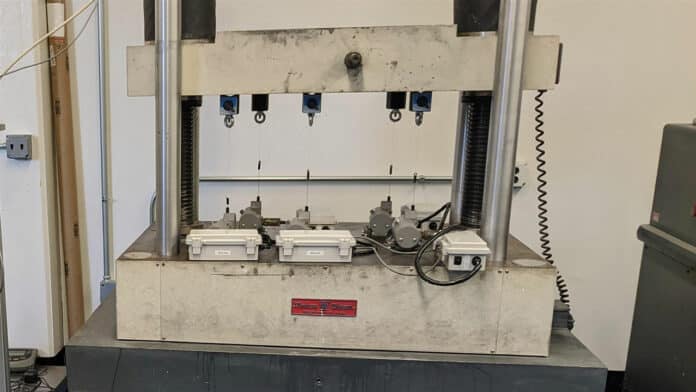Bridges are essential in connecting people, goods, and transport across two points: valleys, rivers, lakes, and rocks. Operational and environmental factors can have unavoidable effects on the serviceability and safety of a bridge. It is, therefore, crucial to monitor the health of bridges to ensure integrity and security, detect the evolution of damage, and predict the performance deterioration of bridges.
Researchers at Drexel University’s College of Engineering have developed a solar-powered, wireless sensor system that can continuously monitor bridge deformation and can be used to alert authorities when bridge performance deteriorates significantly.
The researchers’ wireless displacement sensor consists of a solar photovoltaic cell, a displacement measuring device called a displacement potentiometer, and a monitoring interface transceiver. All three are mounted on the bridge to continuously measure its deformation as traffic passes over it and transmit that information to a remote monitoring station.
A displacement potentiometer is fitted to the girder of the bridge. It measures the displacement or movement of the girder, as the bridge temporarily deforms when vehicles pass along it. Changes in this deformation pattern can be an early indicator of structural problems.
Multiple potentiometers can be mounted on the bridge without wiring. The wireless sensor system can accommodate many sensors that monitor the bridge’s movements, such as acceleration, tilt, and displacement. Integrating various sensors into the system can provide a complete picture of bridge health.
The wireless sensor system draws power from solar cells and backup batteries to allow sensors to measure and transmit data throughout the day continuously. It includes a 21.8 by 35 centimeters, 10-watt photovoltaic cell and a large-capacity 14.8-volt lithium-ion battery to store and distribute the collected energy. The large-capacity battery can power the system overnight or during periods of cloudy weather and is optimized for endurance and durability in all weather conditions.
“This configuration is expected to provide uninterrupted power for years, and the battery can provide power on its own for three weeks if it’s cloudy or the solar cell has been disabled,” said Wang, who led the development of the power system.
The researchers tested the system in the laboratory and outdoors in the middle of winter in Pennsylvania to ensure that it could continue to provide power in the most challenging weather conditions.
“The major advantage of this system is removing hundreds, and sometimes thousands, of feet of cables that are expensive, can be damaged, require care during installation, and increase the overall cost of the sensing system,” said Bartoli, who leads the Intelligent Infrastructure Alliance in the College of Engineering. “The other advantage is that with one wireless platform, we could simultaneously read many different types of sensors, not just displacements but also accelerometers, tiltmeters, and strain gages.”
“The goal is for the sensor to last indefinitely with minimal to no need for maintenance,” Bartoli said. “Reliable, continuous monitoring ensures these structures are operating as intended. It allows us to capture data about overloads and the structural deformation caused by large loads on a bridge. It also allows us to see how the structure deforms due to environmental factors, such as wind and temperature changes, so we can ensure that all of these deformations are within the expected range”.
While the wireless sensor system is currently ready for deployment, the team plans to continue testing and refining the system in the lab, adding additional types of sensors and pushing to determine the lifetime of the power supply.
According to the American Society of Civil Engineers, a system like this could be an important safety measure, as well as helping to respond to repair and maintenance efforts.
This system could help federal agencies and inspectors meet the challenge and reduce the overall need for inspections as new bridges are built.
The Federal Highway Administration funded this research – Accelerating Market Readiness (AMR) program.
Journal reference:
- Yao Wang, Mustafa Omer Furkan, Ivan Bartoli, Fei Lu. Power Self-Sustained Wireless Bridge Deformation Monitoring System Based on Solar Photovoltaic. Nature Communications, 2022; DOI: 10.1109/JESTIE.2022.3204487
